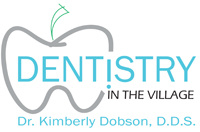Sunshine provides essential benefits to our health. The warmth and brightness of sunlight certainly provide an overall feeling of wellness. What can be more wondrous than sunbathing to make all the vitamin D we need, and take advantage of summer to store up? You may also be aware that Vitamin D is often referred to as the “sunshine vitamin”. Why is that? Well, our bodies can make Vitamin D from the cholesterol in our skin when exposed to the UVB rays of sunlight. It’s one of the most natural ways for us to get vitamin D.
We can also get vitamin D by ingesting foods such as fatty fish (salmon, tuna, herring, mackerel), egg yolks, red meat, and liver. Remember to read food labels, which may be fortified with vitamin D (milk, cereals), and then top up with a vitamin supplement.
Vitamin D is a fat-soluble vitamin, so our body can store this vitamin in our fat stores. Thank goodness, as both calcium and vitamin D are required at all times to maintain and build bones.
So what if you don’t get enough vitamin D? Deficiency is linked to osteoporosis, where low bone mass and fragile bone lead to fractures which can reduce mobility, cause disfigurement, loss of independence, and reduce life expectancy.
So what are the myths to be concerned about?
MYTH: If I get enough sunshine, I don’t need to take vitamin D supplements.
Vitamin D and calcium are used by your body every day to build strong bones and keep your bones dense. Your body breaks down and rebuilds bone all day and night. Even though we store Vitamin D in our fat, did you know that most Canadians don’t have enough? Statistics Canada (2013) found one-third of Canadians did not have sufficient vitamin D levels and 10% were considered deficient. It’s a fact that the farther you live from the equator, the more likely you need to supplement vitamin D. For Canadians, especially in winter, we must supplement, and even in summer, many of us still do not make enough vitamin D to maintain healthy levels.
Did you know the UVB light we need to make vitamin D cannot penetrate glass? So, if you are in a car or behind a window, as well-feeling sunlight can feel, it won’t make vitamin D.
MYTH OR FACT? If I wear sunscreen, I won’t be able to make vitamin D.
It’s true that UVB light in the skin is required to make vitamin D, however, studies vary. Although sunscreens scatter UVB light on the skin, some studies have shown that vitamin D levels are higher in the summer even with regular sunscreen usage. It’s important to apply sunscreen 30 minutes on exposed skin areas prior to sun exposure – to prevent cancer. The amount of sunlight required to maintain adequate vitamin D levels may damage the skin of Canadians who are exposed to the short season of summer and not used to regular sun exposure. So the answer is to supplement vitamin D for the benefit of preventing osteoporosis and the numerous other health benefits it provides – and put on your sunscreen.
Your pharmacist can help with determining the amount of vitamin D supplementation required for all family members.
MYTH: If I have darker skin, I can absorb more sunlight and have more vitamin D levels than someone with lighter skin.
Actually, individuals with darker skin have to be exposed to sunlight for a longer duration to get the same production of vitamin D. Individuals with darker skin have been found to have lower levels and more incidents of vitamin D deficiency, in Canada.
MYTH: The best way to get vitamin D is sunlight.
Supplementation with vitamins and fortified foods are an easy and excellent ways to get vitamin D. Choosing foods with vitamin D also works, but choices are limited. Taking a supplement removes the increased risk of skin cancer from sunlight exposure, and provides all the benefits of having adequate vitamin D levels.
MYTH: Calcium is more important than vitamin D for osteoporosis.
To absorb the calcium you need vitamin D. Osteoporosis requires proper nutrition, calcium, vitamin D supplementation, and exercise. Ask your doctor or pharmacist about the proper balance of diet, supplements, and exercise to prevent or slow the progression of osteoporosis.
 Back to myNiagaraOnline
Back to myNiagaraOnline
































